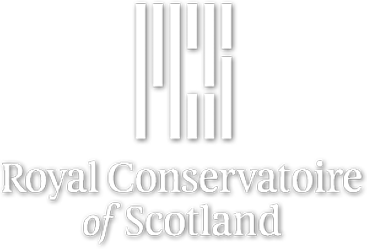Bridging the Gap: Toward a Reunification of Actor Consciousness
Research output: Contributions to journals › Article › peer-review
Contributors
About
In lieu of an abstract, here is a brief excerpt of the content:
A production of Hamlet. An actor enters. He begins to speak: “To be, or not to be – that is the question.”1 Now a doubling is occurring. The audience sees Hamlet contemplating oblivion. Simultaneously, they see an actor playing Hamlet and are more or less aware of their immersion in a fiction. Throughout history, this duality has prompted theorists both within and outside the theatre to consider the nature of actors’ minds when they perform. From the earliest discourses on performance, the notion of multiple potential levels of consciousness has been advanced and explored. The question has been resolved by incorporating the actor’s duality: divided consciousness is seen as desirable and arguably necessary in performance. Though couched in a panoply of terms, discourse on divided consciousness has tended to focus on theoretical constructs (actor versus character) or performed effects (emotional identification versus representation) rather than practical execution. Can divided consciousness be considered in a different way: as a result of the mechanics by which performances are made and executed? If this consideration is possible, what might it reveal about the nature and consequences of divided consciousness?
This article considers the question from the perspective of flow (the psychological state associated with “being in the zone”). By using flow theory to analyze performance practice, a different picture of divided consciousness emerges. Specifically, in identification-oriented performance practice, divided consciousness may be seen as a schism between two flow dimensions: clear goals and immediate feedback. It emerges as a result of simultaneously seeking two conditions. First, actor-character merger, the assumption that a role in performance results from a joining of the actor and the character he is portraying. Second, the creation of and adherence to a “pre-agreed-upon” performance structure, which is here defined as any planned performance output, regardless of its form or content, whose purpose is to communicate a specific and preselected meaning to an audience. The implications of this understanding prompt several questions: is divided consciousness desirable for actors? If not, can it be successfully minimized through the deployment of alternate rehearsal and performance techniques? Starting from a contextual overview of flow theory, performance structure, and divided consciousness, these questions will be considered in turn.
A production of Hamlet. An actor enters. He begins to speak: “To be, or not to be – that is the question.”1 Now a doubling is occurring. The audience sees Hamlet contemplating oblivion. Simultaneously, they see an actor playing Hamlet and are more or less aware of their immersion in a fiction. Throughout history, this duality has prompted theorists both within and outside the theatre to consider the nature of actors’ minds when they perform. From the earliest discourses on performance, the notion of multiple potential levels of consciousness has been advanced and explored. The question has been resolved by incorporating the actor’s duality: divided consciousness is seen as desirable and arguably necessary in performance. Though couched in a panoply of terms, discourse on divided consciousness has tended to focus on theoretical constructs (actor versus character) or performed effects (emotional identification versus representation) rather than practical execution. Can divided consciousness be considered in a different way: as a result of the mechanics by which performances are made and executed? If this consideration is possible, what might it reveal about the nature and consequences of divided consciousness?
This article considers the question from the perspective of flow (the psychological state associated with “being in the zone”). By using flow theory to analyze performance practice, a different picture of divided consciousness emerges. Specifically, in identification-oriented performance practice, divided consciousness may be seen as a schism between two flow dimensions: clear goals and immediate feedback. It emerges as a result of simultaneously seeking two conditions. First, actor-character merger, the assumption that a role in performance results from a joining of the actor and the character he is portraying. Second, the creation of and adherence to a “pre-agreed-upon” performance structure, which is here defined as any planned performance output, regardless of its form or content, whose purpose is to communicate a specific and preselected meaning to an audience. The implications of this understanding prompt several questions: is divided consciousness desirable for actors? If not, can it be successfully minimized through the deployment of alternate rehearsal and performance techniques? Starting from a contextual overview of flow theory, performance structure, and divided consciousness, these questions will be considered in turn.
Details
| Original language | English |
|---|---|
| Pages (from-to) | 147-169 |
| Journal | Journal of Dramatic Theory and Criticism |
| Volume | 29 |
| Issue number | 2 |
| DOIs | |
| Publication status | Published or Performed - Jan 2015 |
Author keywords
Keywords
- Pre-agreed-upon performance structure, divided consciousness, performer training, acting, flow
